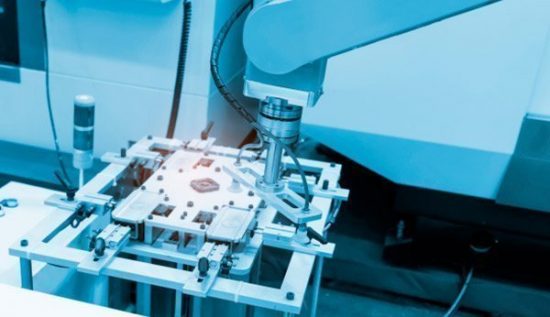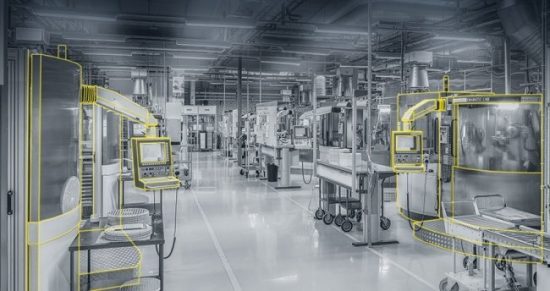New Demands, New Solutions
New tool holding products mirror modern metalworking demands. Article by Andrei Petrilin, Technical Manager, Rotating Tools, ISCAR.
In general, tool holding (tooling) equipment has not undergone any fundamental changes for a long time. Although there have been some notable advances such as the introduction of quick-change tooling in the 1970’s and the appearance of modular systems using polygon taper coupling and systems based on HSK adaptation for high rotational speed in the 1990’s, tooling development seems to fit quite firmly into the “if it ain’t broke don’t fix it” category.
Toolholders act as an interface between cutting tool and machine, and they should both ensure proper clamping of the cutting tool and also be suitable for mounting in the fitted spindle or tool changer magazine of a machine tool. The metalworking industry has compulsory standards to strictly specify the matching surfaces for both these purposes. These standards define a wide range of existing tooling systems to meet different manufacturer requirements: simple holders for manual tool changing for conventional machines with hand control, precise high-grade-balanced adaptors for high-speed machining centres. This variety of tool holding arrangements provides the manufacturer with multifold options for effective tool holding, depending on production targets and available machinery. This is mainly why tool holders reached a certain level of excellence that did not require groundbreaking changes.
Today, modern tooling is evolving along with metalworking industry developments in the world of Industry 4.0 and its impact on state-of the-art manufacturing and new technological horizons. Manufacturing digitisation also plays an important part in the development of new tooling features.
Advances in high speed machining (HSM) exemplify the cause and effect of these changes. Implementation of new technologies in this important field has necessitated a new level of tool balancing to ensure tool holder performance and reliability in a significantly expanded range of rotational speeds, with the objective of improving strength, rigidity, accuracy and other technical parameters of the traditionally designed tool holders. High-efficiency milling of difficult-to-cut aerospace materials, like titanium alloys, have increased demands for durable tool holders working in hard conditions.
The effect of these developments can be observed by noting ISCAR’s introduction of a range of tool holding solutions. As one of the largest cutting tool manufacturers in the world, ISCAR is recognised as a strong supporter of constant product innovation.
Today the company offers a rich choice of arbors, holders, adaptors, blocks, thermal and power chucks etc. for effective tool clamping. Following industry demands, performance parameters for these parts have been tightened up significantly. For example, SHRINKIN thermal shrink chucks with HSK 100 shanks now feature G2.5 balance quality and a residual unbalance of less than 1.0 g/mm (.00139 oz/in) at 20,000 rpm, MAXIN 32 power chucks ensure clamping torque up to 1,760 N/m (1,300 lbf/ft), and FINEFIT radial and angular alignment tool holders for high speed reamers maintain radial and axial runout adjustment to 0.001 mm (.00004 in).
Clamping And Cooling
ISCAR recently launched a series of new tooling families that provide an effective pinpointed coolant supply. In many cases, like machining titanium or exotic high temperature superalloys (HTSA), which are common for the aerospace industry, cooling is a critical factor of success.
X-STREAM SHRINKIN is a family of thermal shrink chucks with coolant jet channels along the shank bore. The family utilises a patented design for holding tools with shank, made from cemented carbide, steel or high-speed steel (HSS). The new chucks combine the advantages of high-precision heat shrink clamping with coolant flow, directed to cutting edges. X-STREAM SHRINKIN has already shown excellent performance in milling aerospace parts, particularly titanium blades and blisks (bladed discs), and especially in high speed milling. In machining deep cavities, the efficient cooling provided by the new chucks substantially improves chip evacuation and diminishes chip re-cutting.
Turning
In turning, ISCAR has developed a new concept for high pressure coolant (HPC) supply for VDI DIN 69880 quick-change adaptation systems, intended for turning machine tools. The JETCUT concept is based on bottom-fed HPC channels and provides coolant supply internally through the tool and externally through the flange. The resulting cooling effect significantly improves performance in turning, grooving and parting applications.
A wet coolant can act as an excellent tool in a radically different field: increasing the rotational speed of a tool. ISCAR’s SPINJET family of coolant-driven high speed compact spindles for small diameter tools is a type of “booster” for upgrading existing machines to high speed performers . The SPINJET spindles are recommended for tools up to 7 mm (.275 in) in diameter, however the optimal diameter range is 0.5-4 mm (.020-.157 in). The “booster” demonstrates a highly impressive output: depending on pressure and coolant flow rate, the spindles maintain a rotational speed of up to 55,000 rpm. The versatile SPINJET products have been successfully integrated in tooling solutions for milling, drilling, thread milling, engraving, chamfering, deburring and even fine radial grinding.
Reaming
In reaming, floating chucks are used in high-precision hole making to correct any misalignment between the central axes of a reamer and a hole. Precise alignment is essential for optimal performance and hole accuracy. To this end, ISCAR added a new design of GFIS floating chucks for high speed reamers to the ER COLLET chuck family. The new chuck is unlike any other floating system in the market, due to the integration of a unique technology that ensures the system remains completely rigid until it reaches a steady state of reaming.
Matrix
The Industry 4.0 concept of data-driven smart manufacturing has had a direct impact on the entire chain of production, including the seemingly conservative field of tool holding. In a smart factory, production systems perform under the conditions of real-time mutual information exchange. ISCAR’s modern tool holders incorporate holes for RFID (radio-frequency identification) chips, which can be mounted according to customer request. ISCAR’s MATRIX intelligent computerized tool storage unit reads the RFID chips and receives all necessary identification data from the tool holder.
These selected examples characterize the development of tool holding products. Despite a “conservative reputation”, the latest tool holding product innovations both reflect and reinforce the trends of metalworking today and beyond.
Check these articles out:
● Increasing Integration Of Storage And Sawing Technology
● LVD: Electra FL 3015 Fibre Laser Cutting Machine
● Giving Toolmaking A Competitive Edge With A Communication Tool
● New Heights For Aerospace Industry
● Hexagon Releases Complete Solution For Laser Scanning On The Machine Tool
● HAIMER To Showcase Latest Technologies And Solutions At EMO 2019
● LVD: ToolCell 220/40 Plus Press Brake
● EMO Milano 2021: Meet “the magic world of metalworking”
● RS Components Discuses Metalworking Industry Trends
● VDW Discusses Trends Shaping Metalworking Industry
WANT MORE INSIDER NEWS? SUBSCRIBE TO OUR DIGITAL MAGAZINE NOW!
FOLLOW US ON: LinkedIn, Facebook, Twitter











